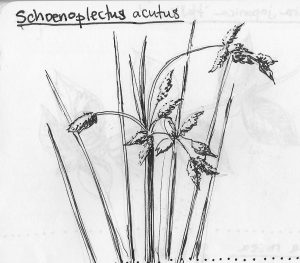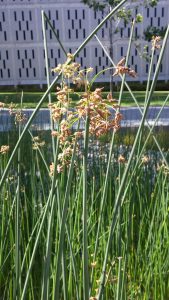

Common name: tule, hard-stem bullrush
Family name: Cyperaceae
Description: Freshwater rush species native to the lower mainland. Characterized by tall, slender, grey-green tubes filled with a pithy substance. This plant is culturally important to the Indigenous peoples of the Vancouver area. It was used as an insulator, bedding or packing material.
Flower: Inflorescence is a terminal panicle of 3-10 spikes that each have 50 spikelets.
Foliage: Stalks are evergreen with a blue-green colour, and grow to be about 3m. Leaves are few and short and at the base of the stems.
Growing conditions: Prefers to grow in standing water from 10-30cm in depth. Can tolerate up to 1.5m of water, but not for very long periods. It will grow on alkaline, saline or brackish sites. Can tolerate periods of drought and total inundation.
Height and spread: 3m tall; will spread about 45cm per growing season.
Limitations: Is susceptible to being forced out by invasive species.
Landscape uses: This plant has a beautiful texture when planted in masses. It screens but is not solid, creating interesting shadows and light play. It also provides excellent habitat value for nesting waterfowl and wetland birds. The dense root mass also makes Schoenoplectus ideal for bank stabilization.